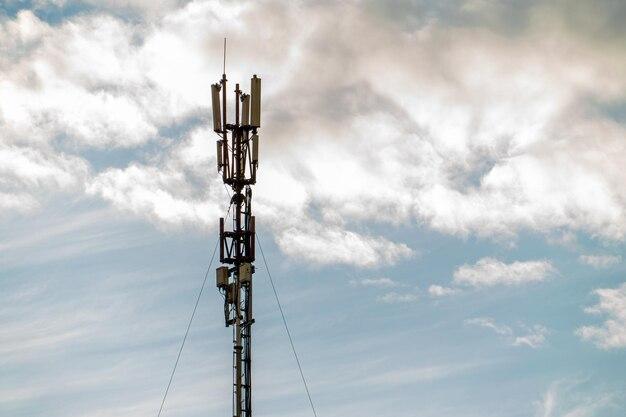PSTN, which stands for Public Switched Telephone Network, is the backbone of the traditional telephone system that has connected people for decades. It is a global network of telephone lines, cables, satellites, and cellular networks, enabling voice communication across the world. Despite the rise of digital communication, PSTN remains a crucial part of our daily lives.
In this comprehensive blog post, we will delve into the workings of PSTN and answer some common questions like the difference between analog and digital lines, the reliability of each, and the availability of analog phone lines in the digital age. We will also explore the significance of PBX in PSTN and its relationship with PABX. So, let’s dive in and uncover the fascinating world of PSTN and how it impacts our communication landscape.
Stay tuned as we explore the inner workings of this age-old system and understand its relevance in today’s digital era.

What is PSTN and how it works?
Understanding the PSTN Infrastructure
The Public Switched Telephone Network (PSTN) is the granddaddy of all telephone systems. Dating back to the late 1800s, it is the stalwart foundation on which our modern phone connectivity is built. Think of it as the cobblestone road that has been repaved and expanded over the years to accommodate the ever-increasing traffic of voice calls.
Decoding the PSTN Jargon
Before we dive deeper into how the PSTN operates, let’s decode a bit of jargon. Firstly, we have the “public” part, which means it’s a network available for the masses, unlike private telephone systems used within organizations. Secondly, “switched” refers to the method through which the network connects calls from one place to another. This involves different nodes and switches strategically positioned across the country, much like a child’s intricate train set.
The Anatomy of a Phone Call
So, how does the PSTN work its magic? Let’s unravel the mystery step by step, shall we? When you pick up your cozy landline or press the call button on your snazzy smartphone, your voice enters a gateway and is transformed into electrical signals. These signals then embark on a journey across wires, cables, and satellites, hopping from one network node to another.
Switches and Crossbars – The Unsung Heroes
At each node, switches play a pivotal role in directing these electrical signals towards the intended recipient. Picture them as traffic police officers expertly managing the chaos of rush hour. They decide which path your call should take, ensuring it reaches the right destination. These switches, armed with advanced algorithms and intelligence, make split-second decisions that even the savviest commuters would envy.
The PSTN: Making Worldwide Connections
The beauty of the PSTN lies in its universal reach. Whether you’re calling your neighbor across the street or your aunt in Australia, the PSTN acts as the ultimate matchmaker, bringing voices together from all corners of the globe. It complies with international telecommunication standards, harmonizing the complexities of different networks and facilitating seamless communication.
Evolution of the PSTN: From Voice to Digital Domination
Over time, the PSTN hasn’t only been about old-school analog voice calls. It has gracefully embraced the technological advancements of the digital age. Today, it also caters to data transmission, enabling important services like fax, video calls, and even internet connectivity through DSL. So, the PSTN has gone from being the wise old grandparent to becoming the cool, adaptable friend we can’t do without.
Wrapping Up
And that, dear readers, is the gist of what the PSTN is all about and how it works. Next time you make a call, take a moment to appreciate the intricate infrastructure that seamlessly connects your voice to those who matter most. It may be invisible, but the PSTN is the backbone that keeps our conversations flowing, even in the era of smartphones and internet-based communication. Cheers to the unsung hero of our telephonic world – the PSTN!

FAQ: What is PSTN and how it works?
What is PBX in PSTN
PBX in PSTN (Public Switched Telephone Network) stands for Private Branch Exchange. It is a telephone system that is used within an organization to handle internal and external calls. Think of it as the brains of your office’s phone system. While it may sound like a complex contraption filled with tiny telephone operators running around, it’s actually a sophisticated piece of technology that manages call routing, extensions, and other nifty telephone features.
What is the meaning of data network
Ah, the enigmatic world of data networks! In simple terms, a data network is a fancy way of describing a system that allows multiple devices to communicate and share information with each other. It’s like a digital highway where all your emails, cat videos, and awkward family photos travel at lightning speed. Just imagine thousands of invisible data packets zipping through the air, carrying your precious memes and selfies to their intended destinations. It’s like magic, but with more wires and fewer rabbits.
Are POTS lines analog or digital
Ah, good old POTS lines! POTS (Plain Old Telephone Service) lines are as classic as a vinyl record playing your favorite tunes. They bring to mind the nostalgic sound of a dial-up modem connecting to the internet. But to answer your question, POTS lines are analog, my friend. They rely on the good ol’ analog signals to transmit your voice from one phone to another. It’s like having a conversation with a string and tin cans, but without the string or cans—just a bunch of invisible sound waves doing the talking.
What is PSTN and how it works
Ah, the magical world of PSTN—the lifeline of telecommunications. PSTN, or Public Switched Telephone Network, is like the granddaddy of all phone systems. It’s the vast web of landlines and cables that connects our voices across the globe. Just think of it as a massive spiderweb, but instead of catching flies, it catches your phone calls and transports them to their intended recipients. From the moment you press that call button to the final “goodbyes,” PSTN works tirelessly to ensure your voice travels through the wires, magically appearing on the other end. It’s like a global karaoke party, but without the questionable singing skills.
Are analog phone lines still available
Ah, the good ol’ analog phone lines—they’ve been around longer than blockbuster movies and questionable fashion trends. And yes, they’re still available, believe it or not! Despite the digital revolution taking over the world, analog phone lines continue to hold their ground. It’s like that vintage record player in your grandma’s attic—it may not be the trendiest thing, but it still brings joy and keeps the conversation going, one nostalgic ring at a time.
Which is more reliable analog or digital
Ah, the never-ending battle of analog versus digital. While both have their merits, it’s like comparing apples to oranges—or pugs to corgis, if you prefer a cuter analogy. Analog phone lines have a certain charm and reliability, like your trusty old flip phone that never fails to make a call. It’s simple, straightforward, and has been proven over time. On the other hand, digital phone lines offer a world of possibilities, like a high-tech smartphone with all its bells and whistles. They can transmit data faster, handle more simultaneous calls, and make your voice sound like Morgan Freeman’s distant cousin. So, it really depends on what you value more: the comforting familiarity of analog or the shiny allure of digital.
What is the difference between PBX and PABX
PBX and PABX—it’s like deciphering the secret code of the telephone world. But fear not, my curious friend, for I shall shed light upon this mystery. The main difference between PBX and PABX is simply the “P.” PBX stands for Private Branch Exchange, while PABX stands for Private Automatic Branch Exchange. It’s like the difference between a manual transmission car and an automatic one. PBX requires a human operator to manually connect calls, while PABX automates the process, making it more efficient and freeing up the operator to pursue their dreams of becoming a professional juggler. So, whether you prefer the human touch of PBX or the futuristic efficiency of PABX, remember that both have their own special place in the telephony universe.
What is the difference between analog and digital
Ah, the great analog versus digital debate continues! Let’s dive into the differences, shall we? Analog is like a classic vinyl record, complete with its warm tones and nostalgic crackles. It’s all about continuous waves, like the smooth ripple of a lake on a calm day. On the other hand, digital is like an ultra-sleek MP3 player, boasting crisp sound quality and precise data. It’s all about 0s and 1s, like a secret language only understood by the coolest computer nerds. So, whether you prefer the smooth analog vibes or the precise digital beats, remember that both have their unique qualities, just like your favorite pair of socks.
And there you have it, my friend! A comprehensive FAQ-style subsection that answers your burning questions about PSTN. Now you’re armed with knowledge to impress your friends at your next high-tech dinner party. Feel free to dive deeper into the marvelous world of telecommunications and explore more wonders beyond these FAQ gems. Until next time, keep those phones ringing and internet packets flowing!
